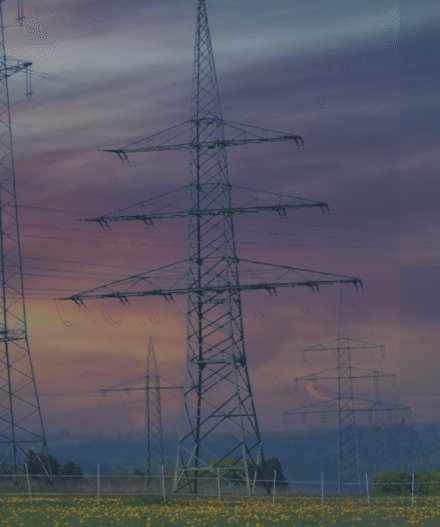RGI welcomes the opportunity to provide feedback to the call for evidence for the upcoming Circular Economy Act (CEA).
In a world of scarcity and rising geopolitical tensions, circularity is not only an environmental imperative but a strategic necessity for Europe’s security, competitiveness, energy and economic resilience, and job creation. Since the adoption of the first Circular Economy Package in 2015, the EU has been leading the progress towards a circular economy globally. However, electricity infrastructure has been a missing puzzle piece in the last decade.
Circular measures for electricity grids
Electricity grids are the backbone of the energy transition, integrating renewables into the energy system, enabling electrification, ensuring security of supply, and contributing to energy affordability. Recognising and enabling the potential of circular strategies within electricity grid infrastructure development is essential to reduce dependencies, waste, and impacts on ecosystems, while accelerating grid build-out. As Europe accelerates its decarbonisation pathway, securing the equipment and respective materials needed to build and modernise electricity grid infrastructure will define the speed, cost and environmental impact of this transition. When effectively designed across the entire business, circularity can bring cost savings and strengthen Europe’s industrial base, thus, benefiting Europe’s resilience and competitiveness, as outlined in Letta and Draghi reports.
The CEA provides a good opportunity to address this potential and anticipate challenges, ensuring that processes and the market for secondary materials are fit for purpose. The Act should recognise the efforts of European grid operators in building circular strategies and adopting measures within their operations and related supply chains. These should be further incentivised to broaden and deepen adoption by TSOs, DSOs and other actors in the value chain. In view of this, the exchange of good practices across the entire value chain, including grid operators across voltage levels, suppliers and regulators, should be facilitated through platforms and case studies. This would help to demonstrate successful circular initiatives, effective remuneration schemes and mechanisms, while providing replicable ideas and solutions.
Box 1: Collaborating for sustainable procurement decisions
11 Transmission System Operators (TSOs) created the Working Group ‘The Greener Choice’ to consolidate methodologies for sustainable procurement, while incentivising suppliers in their value chain to follow suit.
An integrated approach to energy system optimisation
Circularity starts with planning and optimisation. This means designing systems and operations that increase resource efficiency across the entire value chain and life cycle of infrastructure – from design to manufacturing and decommissioning. Incorporating eco-design can ensure refurbishment, repairability, and reuse of equipment and components, significantly reducing the demand for new materials in the mid- to long-term.
To avoid inefficiencies, circularity should be embedded in the broader regulatory framework. The CEA should be coherent and aligned with existing policy and regulatory frameworks across the electricity grid value chain and development stages. This includes, but is not limited to, the Net Zero Industry Act (NZIA), Critical Raw Materials Act (CRMA), Steels and Metals Action Plan (SMAP), Corporate Sustainability Reporting Directive (CSRD), Carbon Border Adjustment Mechanism (CBAM) and the revision of the Public Procurements Directive.
Specifically, public procurement rules should be adapted to recognise and reward design and performance, enabling system operators to integrate sustainability beyond price criteria. In this context, RGI calls for a framework that balances policy priorities and enables the adoption of high-quality circular practices. This includes an approach that considers the policies in place regarding the cost-benefit analysis for grid deployment, but also the legislative barriers that could, for instance, lead to early scrapping of still functioning valuable assets.
To ensure the feasibility of potential circularity requirements, they should follow market maturity and technological readiness. During the planning stage, it is important to assess and address the technical implications of circular measures – from reuse, refurbishment, repair and recycling. Indeed, embedding circularity in electricity grids, such as the use of recycled raw materials, could impact transmission capacities. To reconcile decarbonisation and circularity, such approaches should be employed early on in the planning process and across business operations to ensure that the technical and transmission capacities of the assets are maintained.
Box 2: Pilot Project for recycled aluminium in France
In a first-of-its-kind pilot project, the French transmission system operator RTE launched a circular approach to conductor production. For the first time worldwide, aluminium from decommissioned grid conductors was recycled and recovered to produce new conductors that meet performance and safety standards. See more information here.
At the same time, promoting and incentivising innovation, including limiting the technical and mechanical gap between virgin and recycled raw materials, is needed. This could provide predictability for manufacturers, who can increase their industrial base through data-driven planning of their investments.
Circularity as a systemic consideration
Circularity is systemic in nature and should be addressed in a cross-sectoral manner. Electricity grids share materials and supply chains with sectors such as defence, mobility, and digital infrastructure, including information and communication technologies, often complementing or even competing for the same critical resources. To identify these synergies and tap into their potential, the European Commission should promote cross-sectoral dialogues and foresight. Coupled with regulatory mechanisms and financial incentives to reward stakeholders, including system operators, for returning materials into the circular loop, this can help ensure that recycled materials are available in sufficient quantities, in a timely manner and at an affordable cost. Such a cross-sectoral and system-wide approach, that enhances transparency and predictability, would deepen the Single Market and also provide manufacturers and recyclers with the visibility and certainty to invest further in circular capacity and innovation.
At the global level, resource extraction and processing is responsible for over 55% of global greenhouse gas emissions. The CEA should consider the implications of the Carbon Border Adjustment Mechanism (CBAM), that accounts for the externalisation of environmental impacts. Further analysis should be carried out before specific raw materials are incorporated into CBAM’s future scope expansions to avoid unintended impacts on the European security of supply and competitiveness. In particular, careful planning is essential for materials on which the EU is heavily dependent on imports, as the mechanism could affect grid tariffs and overall affordability. On that front, the Joint Research Centre’s (JRC) study assessing material needs for electricity grid infrastructure is a step in the right direction.
Box 3: Terna’s circular economy strategy – a Roadmap to 2030
Terna, the Italian electricity TSO, pursues the objective of integrating circularity into its business model to enhance sustainability, extending it to the supply chain. In 2023, the 2030 Roadmap was defined for material sourcing and proper use, sustainable resource management, including secondary raw materials, and waste minimisation. Regular updates ensure a dynamic tool adaptable to regulatory and business developments. See more information here.
Alongside import considerations, effective measures on exports of critical and strategic raw materials would maintain well-functioning supply chains for electricity grids. While CBAM is addressing the outsourcing of materials through the lens of European competitiveness, RGI stresses the need to maintain supply chain resilience, especially regarding the raw materials required for the EU decarbonisation goals. The upcoming Act should strive to create market conditions that support viable business models for recyclers and scrapers to recover materials, enhance the financial attractiveness of scrap trade within the Single Market, while ensuring fair competition between Europe and other scrap purchasing markets. Challenges related to each critical raw material should be assessed, leading to tailored strategies that maximise the EU security of supply. This would support the development of recycling companies, including by safeguarding a minimum volume of scrap in its market and by strengthening regulatory safeguards in export policy.
Data and transparency
Strengthening the Single Market for secondary raw materials will require reliable and common methodologies to assess circularity across the electricity grid value chain. For this to happen, EU-wide databases should be established, alongside processes for sorting and reporting raw materials, such as copper, aluminium and steel. Such tools should provide information on purity, quality, and reusability, thus, supporting high-quality recycling, preventing downcycling and enabling cross-border circulation of secondary raw materials, including the concept of the ‘urban mine’. This can provide clarity for relevant stakeholders and allow for comparison of different options.
To address complexity and expedite timelines, broad collaborations, encompassing grid operators, suppliers, recyclers, scrapers and other relevant actors, are required. Moreover, the European Commission’s Joint Research Centre (JRC) could play a role in facilitating the availability and exchange of high-quality data.
Box 4: A data-based circular strategy for grid operation
To address the forecasted scarcity of raw materials, as well as minimise costs and environmental impacts, Elia Group developed a circular strategy that accounts for optimisation of the grid in its design, extending assets’ lifetime and promoting recycled raw materials in new assets, as well as managing waste to reach the lowest level of final waste and avoid downcycling valuable waste. Their approach utilised data from the CSRD 2024 audit, which diagnosed an attention point on some raw materials, as well as the opportunity for increasing recycling rates and decreasing disposal rates. See more information here.
contact
Nathália Pimentel
nathalia[at]renewables-grid.euManager – Communication & Energy Systems

Alexandros Fakas Kakouris
alexandros[at]renewables-grid.euSenior Manager – Energy and Policy Systems









